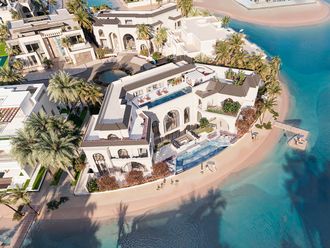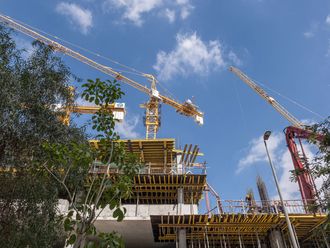
Dubai
Investor alert — buyers rushing to snap up Dubai’s affordable property options need to get a reality check. The higher yields they expect to realise from these may be fleeting.
Because there are too many of these similarly priced homes are getting built now for delivery by 2020, “the high yields expected by many post-handover are unlikely to be sustained”, says a new market update from the consultancy Core Savills. More so, “if rental demand of these projects is insufficient at handover, this supply surge is expected to exert considerable downward pressure on rents (and) leading to faster yield compression.
“Eventually, this contraction in yields will reduce investor demand, in turn pulling sales prices down over the midterm.”
An estimated 120,000 plus properties could be added in Dubai by 2020-21, with about 30-40 per cent deemed affordable. These are units carrying price tags of under Dh1,000 a square foot and with smaller built areas as well (800-1,100 square feet being the norm).
For the moment, investors are piling into this category, thinking they would be able to generate better returns from future rentals.
Between 2014-16, “the stronger decline in (property) prices and only a slight weakness in rents allowed yields in this segment to rise 68 base points representing a relative 8 per cent increase, which worked towards increasing demand,” the report adds. “Most of this buyer demand was led by investor buyers as opposed to end users, who could not afford to shift to ownership due to continued affordability issues.”
For the longer term sustainability of the market, today’s tenants will need to start buying and become end users. But, based on market evidence, these tenants are staying put. And which could be why rents within the mid- to lower-end of Dubai’s residential space have not dropped as much as those in high-end areas did.
As for the high-end areas, prices could stabilise and the rental declines start to slow down, Core reports.
For the overall market, apart from rental declines, factors within the broader economy too could pull down yields. There is the “ongoing strength of the dollar and the imminent — albeit probably limited — inflationary effects of the introduction of VAT are expected to compress investment yields.”
In Dubai’s office realty space, it’s all hunky-dory at the top end. Prime districts — including DIFC, D3, Tecom and One Central for example — all experience high demand, evidenced by steady pre and post-leasing activity, the Core report notes.
“Master developers of Grade A stock have traditionally preferred not to sell due to the high rental demand. Such developers are typically cash-rich and can therefore sustain the leasing cycle, allowing them to hold on to the stock indefinitely.”
As such, there were fewer institutional investors active in this tier due to the limited of investment-grade stock available for sale. Apart from limited stock available for them to buy, they may also be put off by the shorter leasing periods offered at prime commercial property.
“Institutional investors typically prefer investment grade assets that are tenanted by blue-chip occupiers with long-term leases of 15 years or more. The average lease terms for prime occupiers in Dubai, however, are much shorter, ranging from five to nine years, largely due to the 4 per cent transfer fee applicable on the total lease value for a duration above 10 years, which deters occupiers from considering longer term options. “Furthermore, many office complexes within freehold areas are developed and controlled by free zone authorities, while land in onshore areas remains leasehold.”
Reits spice up the action in Dubai’s property market
In the last two years, real estate investment trusts (Reits) have snapped up quite a few high-exposure properties and projects, such as the “purchase of The Edge, Uninest and South View School by ENBD REIT”. According to David Godchaux, CEO of Core Savills, “Given that Reit’s currently represent a notably small share of the UAE’s listed real estate market compared to other global hubs, the sector is expected to continue expanding over the midterm. By further integrating real estate and capital markets, Reits will potentially increase funding avenues for developers as well as provide smaller investors access to diversified property investments.”











